Art can’t stop war or save lives. But, at least at its best, it can change minds. Art can get under your skin, pop into your head when your eyes are closed, and shake you out of complacency.
This election season, CULTURED asked a range of artists to pick a work of art that deals in some way with politics and tell us how it has influenced them. They could select a recent work or an older one, something explicitly or implicitly political. The most important qualification was that they chose a work that changed the way they think.
The answers ranged widely. Faith Ringgold proved especially popular; in one delightful coincidence, an artist chose a work by someone who also contributed to our list. In the end, these selections prove that there is no one form of political art, and no singular impact it can have. But its significance in the hearts and minds of artists endures.
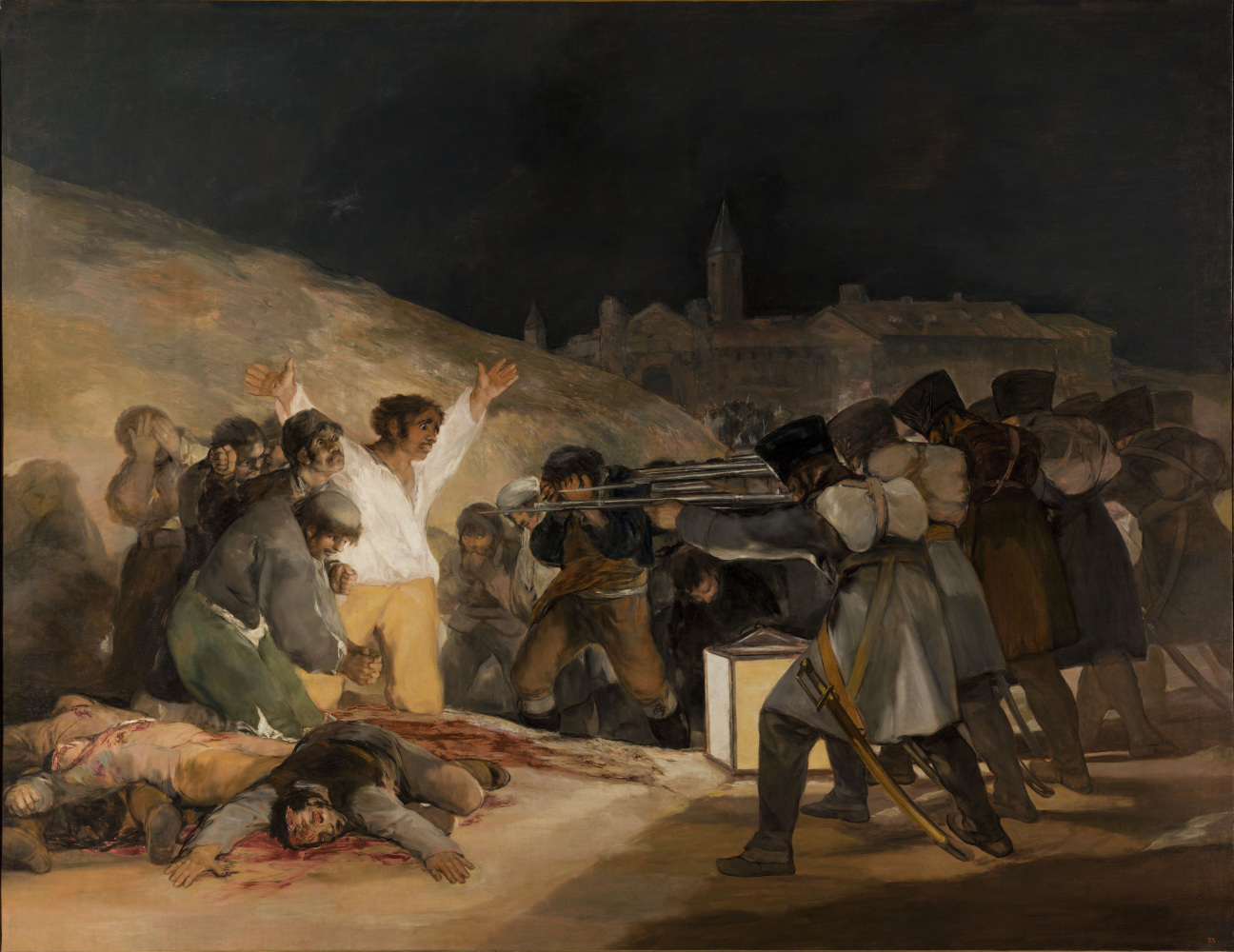
Dara Birnbaum
Francisco Goya, The Third of May 1808, 1814
"When exhibiting at the Museo Nacional Centro de Arte Reina Sofía, I took a walk to the Prado, where I was simply knocked out by unexpectedly coming upon Francisco Goya’s 'Black Paintings.' The Third of May 1808 stays with me still—Goya painted it in his late 60s to commemorate the Spanish resistance to Napoleon’s armies during the occupation of 1808. A direct statement now referred to as “revolutionary” both in style and intention. It is still considered as a groundbreaking, archetypal image of the horrors of war. It inspired Gerald Holtom’s design for the logo of Britain’s campaign for Nuclear Disarmament (ND, 1958) and later became the international peace symbol (that which I most wish for today)."
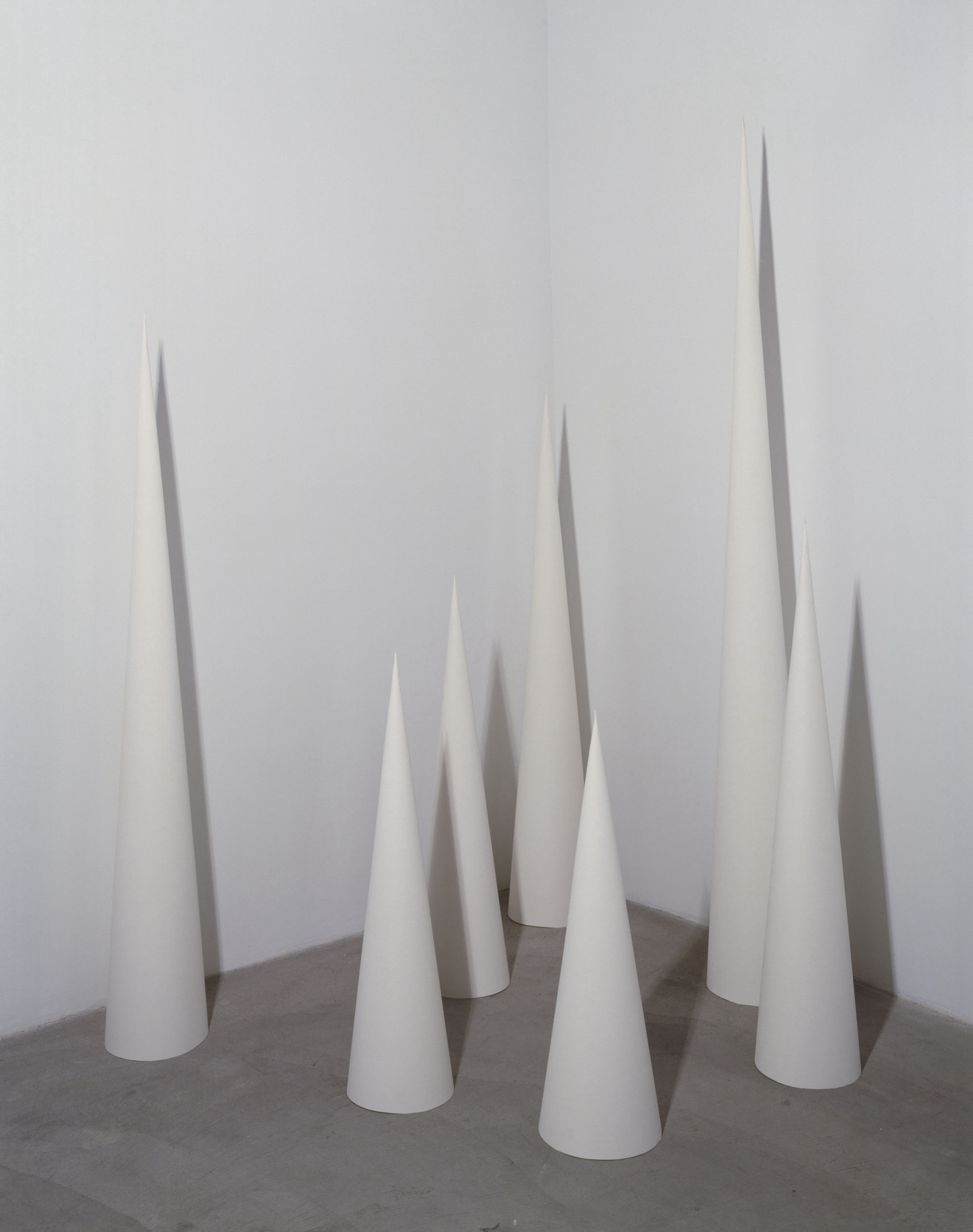
Kiyan Williams
Felix Gonzalez Torres, "Untitled" (Supreme Majority), 1991
"I first encountered Felix Gonzalez Torres’s "Untitled" (Supreme Majority) 17 years ago during a high school field trip to the Museum of Modern Art in New York. I remember how it made me feel, as if the pointy paper sculptures were piercing through my flesh. It left an indelible impression and embodies how art that engages the socio-political doesn’t necessarily 'say something'; rather, it does something to how we see and sense the world. For these reasons, the work that I make across subject matter always communicates on the haptic register through form and materiality."

Adrian Piper
Sol LeWitt, 46 Variations on Three Different Kinds of Cubes, 1967
"I remember as vividly as if it were yesterday the power of those austere white, four-foot high square columns of steel cubes, stacked in threes and set in rows of six, advancing toward me in direct frontal formation, each shaded slightly differently from the next, all displaying simultaneously the rigor of system and the playfulness of idiosyncrasy, filling the space with their authority. They radiated presence, significance, and also mystery, because the conceptual scheme they embodied was not perceptually obvious. In order to understand why these physical structures expressed meaning and order so intensely yet so privately, you had to be willing to study them, compare them, count them, organize them in thought; to think, to research, to consider carefully the unlimited variety of ways in which even the simplest object could have been slightly different than it was."
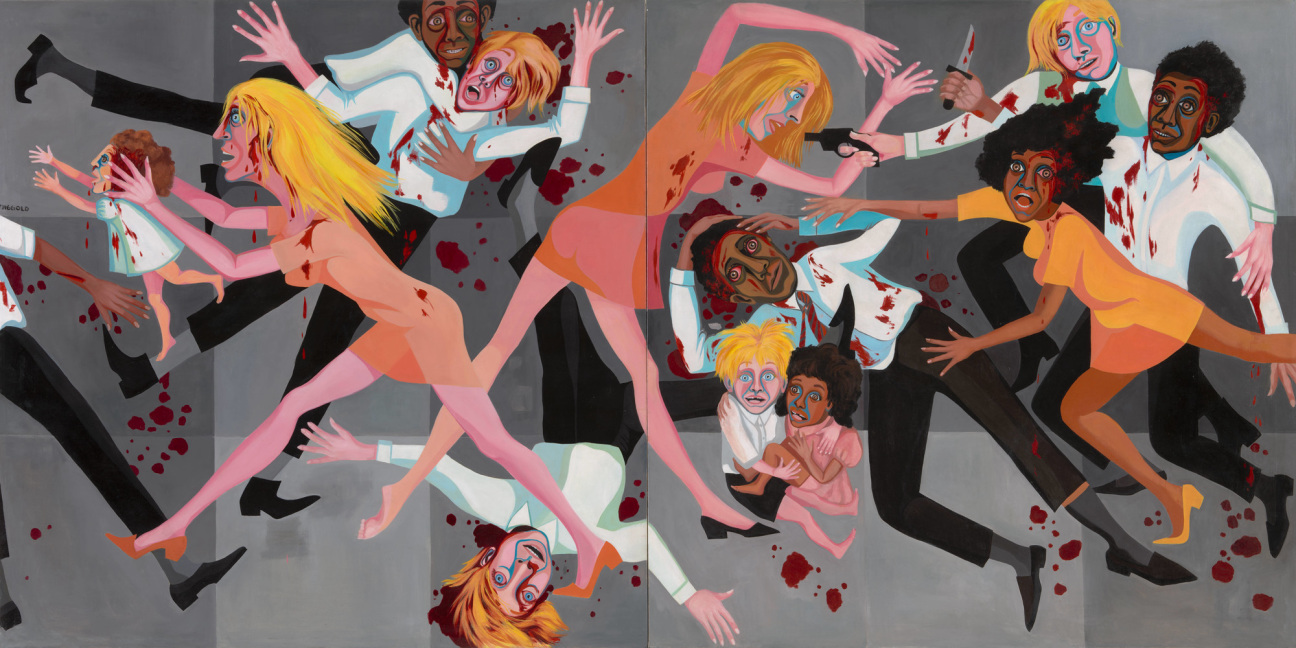
Clarity Haynes
Faith Ringgold, American People Series #20: Die, 1967
"In her 'American People Series' paintings of the 1960s, Ringgold painted Black and white people together, making American race relations visible in color, in paint. Seeing these works long ago, as a very young artist, I felt a jolt of recognition. What she was depicting was the reality of American life, in a way I had not seen expressed in paint before. Die, a timeless masterpiece, is hugely relevant to our current moment, when the issue of gun safety legislation is paramount."
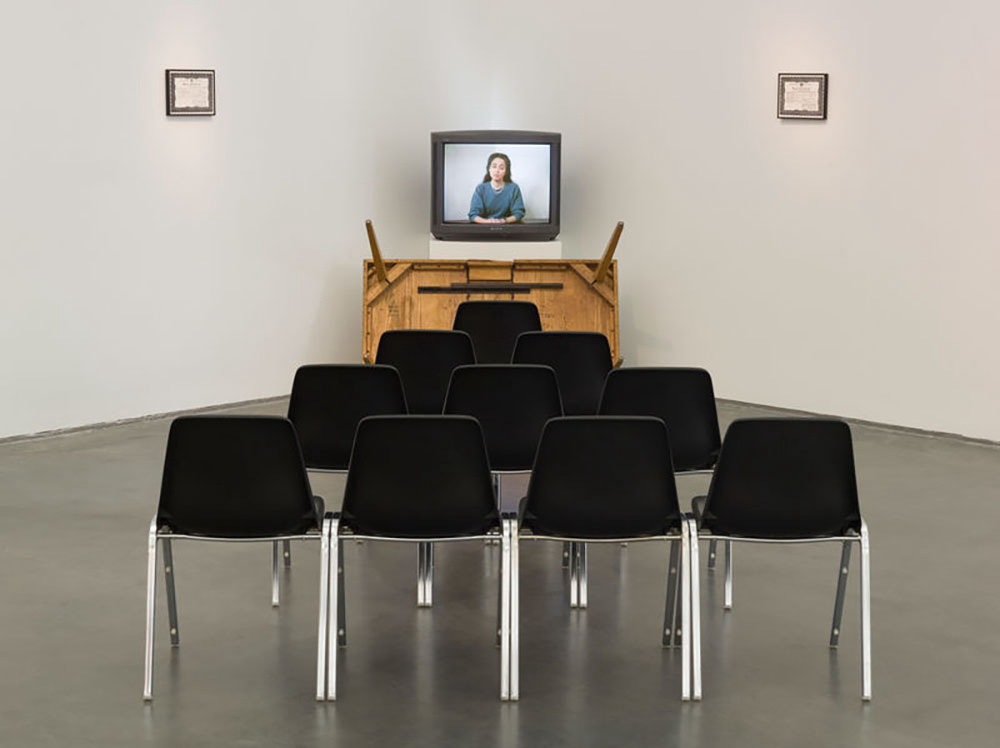
Sam Durant
Adrian Piper, Cornered, 1988
"I chose this work because it changed my life. It challenges the viewer to think and act differently about race, their own especially."

Peter Saul
George Tooker, A Game of Chess, 1946–47
"The reason I started to use politicians as subject matter is because it was 'different.' I was trying very hard to be different, still am actually. Not easy because there’s all kinds of art out there. The idea that someone would actually be influenced politically by a hand-painted picture never crossed my mind. Nobody is that stupid, I hope.
A picture that made a big dent on my mind early—but I’m not sure it was 'political'—was George Tooker’s A Game of Chess, which appeared in a full color reproduction in Life magazine in about 1948. I thought [it had] heavy, heavy psychology, though I didn’t have any knowledge of the artist. It turns out most of the artists who painted the interesting-to-look-at pictures were gay back then—maybe because they had something to worry about: shock treatment, or a couple years in prison, or both."
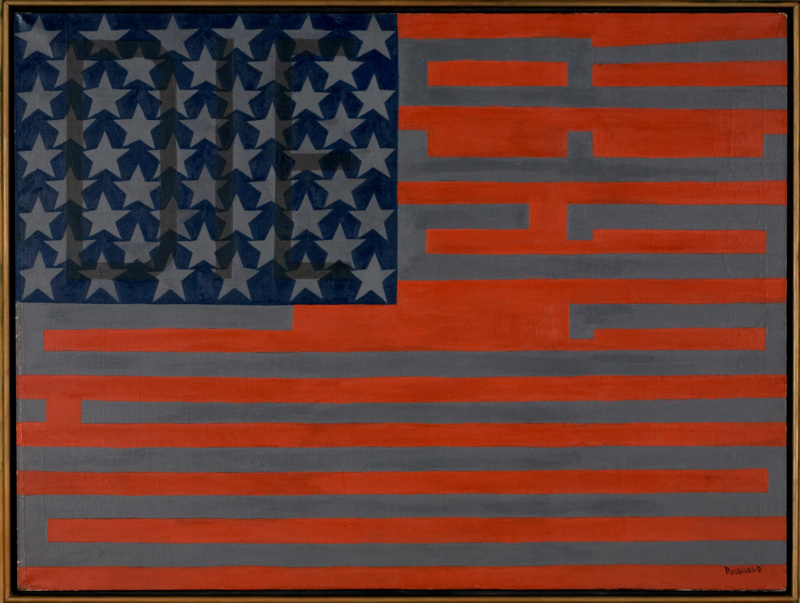
Dread Scott
Faith Ringgold, Black Light Series #10: Flag For the Moon: Die Nigger, 1967
"I was first shown Black Light Series #10: Flag For the Moon: Die Nigger in 1988, soon after I had begun to use the American flag in my art. Seeing Ringgold make such a visceral connection between racism and America, and to do so with a text-based work, was great for me. The work is both very direct and simultaneously subtle—many people miss the text and only see the flag that they want to see."

Andrea Fraser
Martha Rosler, A Simple Case for Torture, or How to Sleep at Night, 1983
"I saw it in the 1983 Whitney Biennial when I was a student. It was very effective in revealing the complicity of the U.S., and U.S. citizens like me, in horrifying acts of torture. It kept me from sleeping for a number of nights and motivated me to become more active in protests against U.S. policies in Central America."
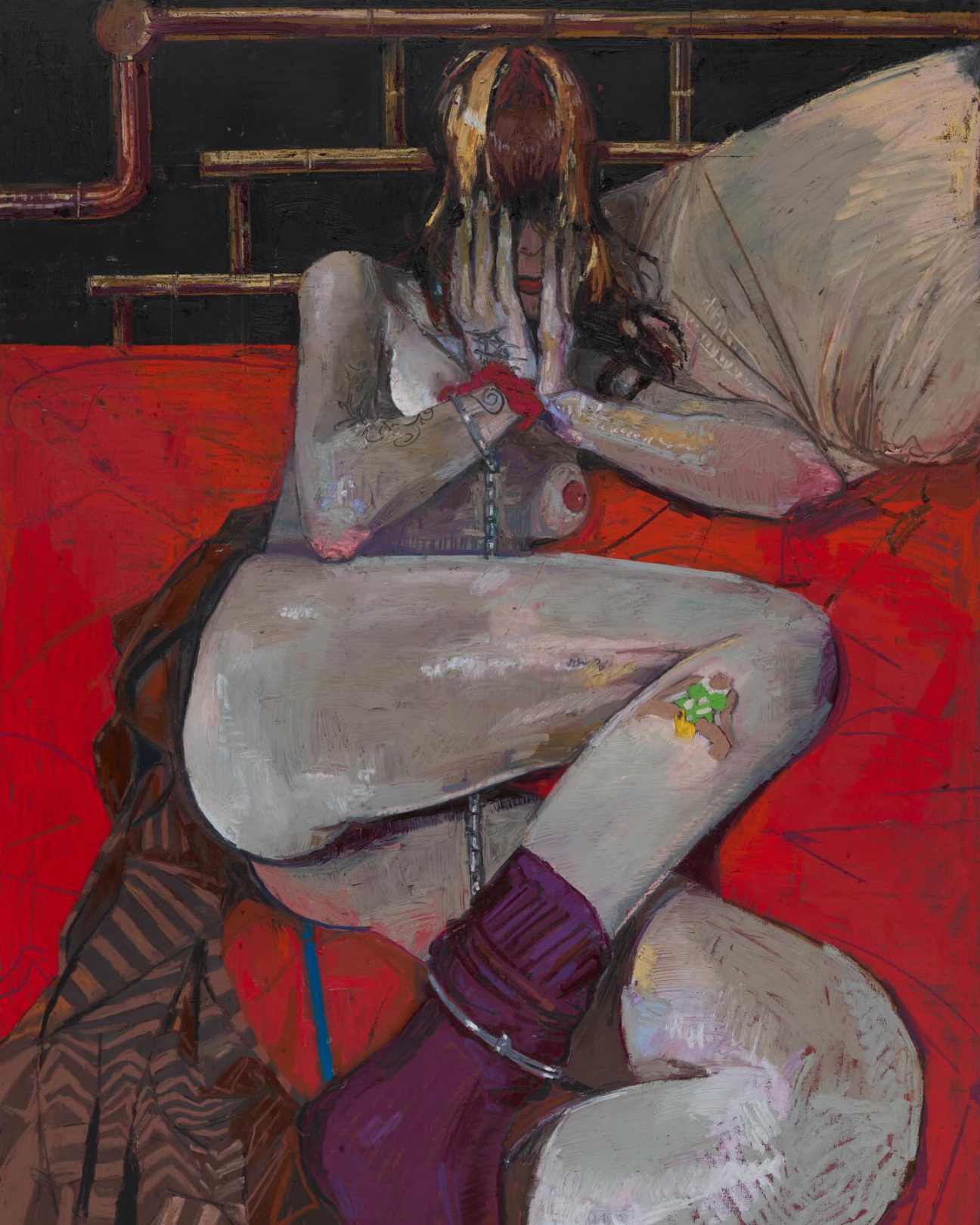
Hilary Harkness
Michelle Uckotter, Pig Girl, 2024
"I've been treated as an abomination, not just in the context of a religious conservative upbringing, but by 'political artists' looking to make a singular point about feminism at the expense of a more expansive view of the spectrum of gender expression. Without empathy, our politics and our art risk becoming hollow and shrill. This painting by Shelley Uckotter makes room for me to breathe in a world that has tried to pinch and diminish me from day one. I feel less alone because of this painting. It's a painting that encourages viewers (including other artists) to keep going as ourselves; our whole selves, even when blazing a different trail is exhausting."

Alfredo Jaar
Cildo Meireles, Insertions into Ideological Circuits: Coca Cola Project, 1970
"During Brazil’s military dictatorship in the early '70s, Cildo Meireles created what I consider one of the most subversive works of contemporary art. Meireles altered bottles of Coca-Cola, perhaps one of the most iconic, capitalist, and imperialist symbols, with disruptive messages. Empty bottles were put back into circulation with political inscriptions, enabling them to circulate surreptitiously."

King Cobra
Faith Ringgold, American People Series #3 Neighbors, 1963
"When I made the big switch in 2022 and started using white flesh as a sculptural material, I was really inspired by the 'white' palette Faith Ringgold uses in her 'American People Series.' While tattooing sores and bubbling pox on pale silicone, the pinky 'flesh tone' ink smeared on the palms of my black nitrile gloves revealed material connections between our studios that felt more than on time. Her color theory and artistic courage wakes us all to ways Blackness can reveal characteristics of whiteness that have nothing to do with the color white."










 in your life?
in your life?

